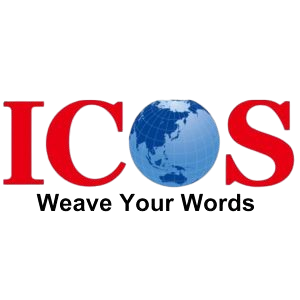A step by step guide on mastering japanese communication style in business with no step skipped
The single biggest problem in communication is the illusion that it has taken place
George Bernard Shaw
In the intricate world of Japanese business, communication extends beyond mere words—it’s a dance of respect, context, and understanding. Unlike the direct, linear communication style often seen in Western cultures, Japanese communication is layered with subtleties that reflect a deep cultural appreciation for harmony and hierarchy.
One of the most profound aspects of Japanese communication is the use of 敬語, the honorific language that indicates the speaker’s social standing relative to the listener. Keigo is divided into three main categories: 尊敬語 (respectful language), 謙譲語 (humble language), and 丁寧語 (polite language). Each serves a specific purpose in communication, ensuring that respect and humility are conveyed appropriately.
For instance, when a Japanese employee communicates with a client or business partner, instead of simply saying “Thank you for your help,” they might use the phrase “お世話になっております。” (Osewa ni natte orimasu), which translates to “I am in your care.” This expression not only conveys gratitude but also acknowledges the ongoing relationship and the assistance provided by the third party. It reflects the cultural emphasis on respect and the importance of maintaining harmonious business relationships in Japan
Understanding and using 敬語 correctly is essential for navigating Japanese business communication. It is not just about knowing the language but about understanding the cultural context that dictates when and how to use certain forms of speech. In meetings, for instance, a Japanese manager may use 敬語 to show deference to a senior colleague, even while discussing a challenging topic, maintaining the necessary respect.

Table of Contents
Navigating the Nuances of Japanese Communication Style in Business
In global business, mastering communication is vital, but understanding cultural differences is essential, particularly when collaborating with Japanese counterparts. Japanese business communication is deeply intertwined with cultural values that prioritise harmony, respect, and indirectness.
Unlike in Western contexts, where directness and clarity are often prioritized, Japanese communication tends to follow a more of an indirect structure. The context and background are provided before the actual fact. This approach can be visualized as a funnel, where the conversation begins broadly with details and gradually narrows down to the core message.
Let’s understand with an example, in a meeting, a Western manager might straightforwardly state, “I’ll be 20 minutes late due to heavy traffic.” In contrast, a Japanese professional might say, “The road is crowded, so I’ll be 20 minutes late,” offering context to soften the message. This approach extends to broader business strategies and polite business conversations.
Misunderstandings may arise in these scenarios. Japanese colleagues may appear hesitant, not out of disinterest, but due to a preference for an indirect approach.
To bridge this communication gap, it’s crucial to be patient, provide context, and clearly articulate ideas. Adapting to this communication style not only enhances understanding but also fosters stronger business relationships with Japanese partners.

Business Manner and Etiquette in Japan
Consider this scenario: You’ve flown halfway across the world to secure a business deal in Tokyo. You arrive on time, exchange business cards, and dive into your presentation. Yet, despite your efforts, your Japanese counterparts’ response seems lukewarm. What went wrong? This situation underscores the importance of understanding Japanese business manners and etiquette.
Respect and hierarchy are foundational in Japanese business culture. It’s essential to address colleagues with formal titles, like “San,” and to recognize the senior-most person first. This acknowledgment of hierarchy builds trust and reflects respect, which is paramount in Japan.
Bowing is another critical aspect of showing respect. In business settings, it often accompanies a handshake during introductions. The depth of the bow varies based on the social standing of the person you’re greeting, and matching the depth of the bow you receive is crucial for mutual respect.
Business card etiquette, or the exchange of meishi, is a formal ritual in Japan. Present your card with both hands, ensuring the text faces the recipient, and treat received cards with care—never write on or fold them. The careful handling of meishi demonstrates the importance of the interaction and your respect for the person.
Japanese meetings are typically formal and consensus-driven. Punctuality is crucial, and decisions are often made collectively, with ample time for deliberation. Rushing decisions can be seen as disrespectful, so patience is key.
Gift-giving, known as “omiyage,” is a gesture of goodwill in Japan. Modest, thoughtful gifts are appreciated, and they should be presented with both hands to emphasise that it’s a small token of appreciation.
Communication Styles in Japan
In Japan, communication is an art form steeped in tradition and subtlety. Unlike the direct and straightforward communication style common in many Western cultures, Japanese communication prioritizes context, harmony, and indirectness. This is especially evident in business settings, where understanding these nuances can significantly impact your interactions.
Example 1: The Indirect Approach in Meetings
Imagine you’re in a meeting with Japanese colleagues discussing a new project. In many Western settings, a manager might say, “This strategy won’t work; let’s do something different.” However, a Japanese manager might approach the same situation with more subtlety: “This is an interesting idea, though we may need to consider alternative options.” While the core message remains the same, the delivery is softer, reflecting the cultural emphasis on maintaining harmony and consideration for others’ feelings.
Example 2: The Role of Silence
In Western cultures, silence during a conversation can be uncomfortable or perceived as a sign of disagreement. In Japan, however, silence is a powerful communication tool. During negotiations, a Japanese professional might pause before responding to demonstrate that they are carefully considering the proposal. This silence is not indicative of hesitation but rather a way to show respect and thoughtfulness.
Example 3: Non-Verbal Cues and Their Importance
Non-verbal communication plays a significant role in Japan. Simple gestures, such as a nod or slight bow, can convey agreement, understanding, or respect. For example, during a presentation, you might notice Japanese audience members nodding subtly, which indicates they are following along, even if they don’t verbally express it. Understanding and interpreting these non-verbal cues can help you navigate Japanese business culture more effectively.
Japanese Communication and Negotiation Skills
Cultural norms in Japan, such as deference to authority and subtlety, inform the way people speak and negotiate. The degree to which one bows shows the degree of respect, and the practice of exchanging name cards (meishi) with both hands to initiate a relationship are examples of this in business.
For the sake of peace and harmony, Japanese communication is typically indirect, setting the stage before getting to the meat of the matter. Meetings are no exception; in these settings, deliberate silence signals thoughtful consideration, not hesitance. It is essential to show respect and understanding through non-verbal clues like bowing and careful listening.
Success in Japanese business requires an understanding of subtleties in communication like keigo, bowing, and indirect speech. Negotiations and the Japanese market can go more smoothly if you conform to these cultural norms

Culture of Respect in Japan
In Japan, respect plays a significant role in both private and public interactions. Roles, ages, and levels of experience are the main determinants of social standing in Japanese relationships.
Respect is a fundamental value in Japanese culture. This is seen in various aspects of daily life—from employees showing reverence to their bosses in the workplace, to students respecting their teachers in the classroom, to sports teams honouring their coaches.
In Japan, bowing is a common alternative to shaking hands in business situations and is one of the most obvious methods to express respect. The status of the people involved determines the bow’s depth and duration.
As part of their job, a lift attendant may bow as often as one hundred times a day to show their appreciation for each customer.
Everyday practices, like waiting patiently in lines, are often simply a social norm in Japan. The value of omotenashi (おもてなし), however, ensures that each client or visitor or foreigner makes them feel genuinely appreciated and welcomed, which would give a sense of respect to the people who are not used to it.
Frequently Asked Question
The business communication acts as a critical and in Japanese context consider incorporating indirect mode of communication rather than raising a public dispute.
The utilization of keigo is mandatory if you are introducing yourself for the first time if it’s in business context. “Watashi wa ___ to moushimasu” is the more appropriate way.
Usually the business adopts a Japanese philosophy called ‘Kaizen’ which means change for better or continuous improvement. They incorporate processes that involve their employees continuously and see improvement in productivity in the long run.
Conclusion
Learning the language isn’t enough to become fluent in Japanese business communication. You indeed need to be aware of cultural subtleties that influences these exchanges
An organization's internal communication mechanism is a nervous system,
Bill Gates
As eloquently said the cultural norms in Japan plays a premeium on group harmony and respect for hierarchy, and this “nervous system” is very sensitive to such ideals.
Adopting these modes of expression will help you succeed in Japanese business settings by increasing your persuasiveness during negotiations and laying the groundwork for mutually beneficial partnerships.
Take the case of Uniqlo, a worldwide fashion brand that found success in Japan by adjusting its presentation style for the local market.
They were in sync with the Japanese tendency for context and indirect communication since they started with a thorough examination of market trends before revealing the focus of their campaign.
This minor change resulted in a fruitful collaboration and robust market.
The cultural values of Japan place a premium on indirection and harmony, which inform the country’s corporate communication style- an nuanced blend of subtlety, respect and tradition.
To be successful in the Japanese market, one must master the intricacies of Japanese commercial communication, including the correct use of keigo and an awareness of cultural subtleties.
Language solutions that are customized to these distinct cultural contexts are our forte at ICOS Global. By overcoming linguistic and cultural barriers, our professional translators and interpreters will make sure your message lands well with Japanese audiences, strengthening your commercial connections.

